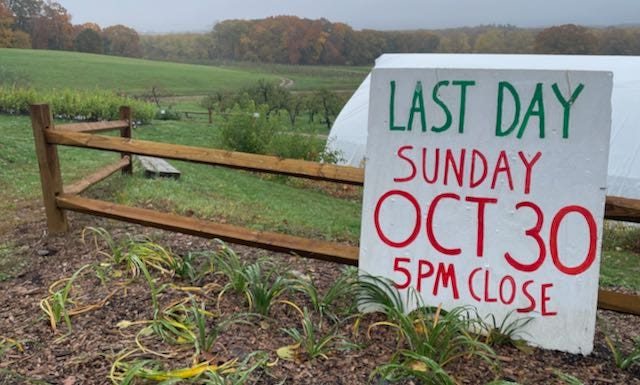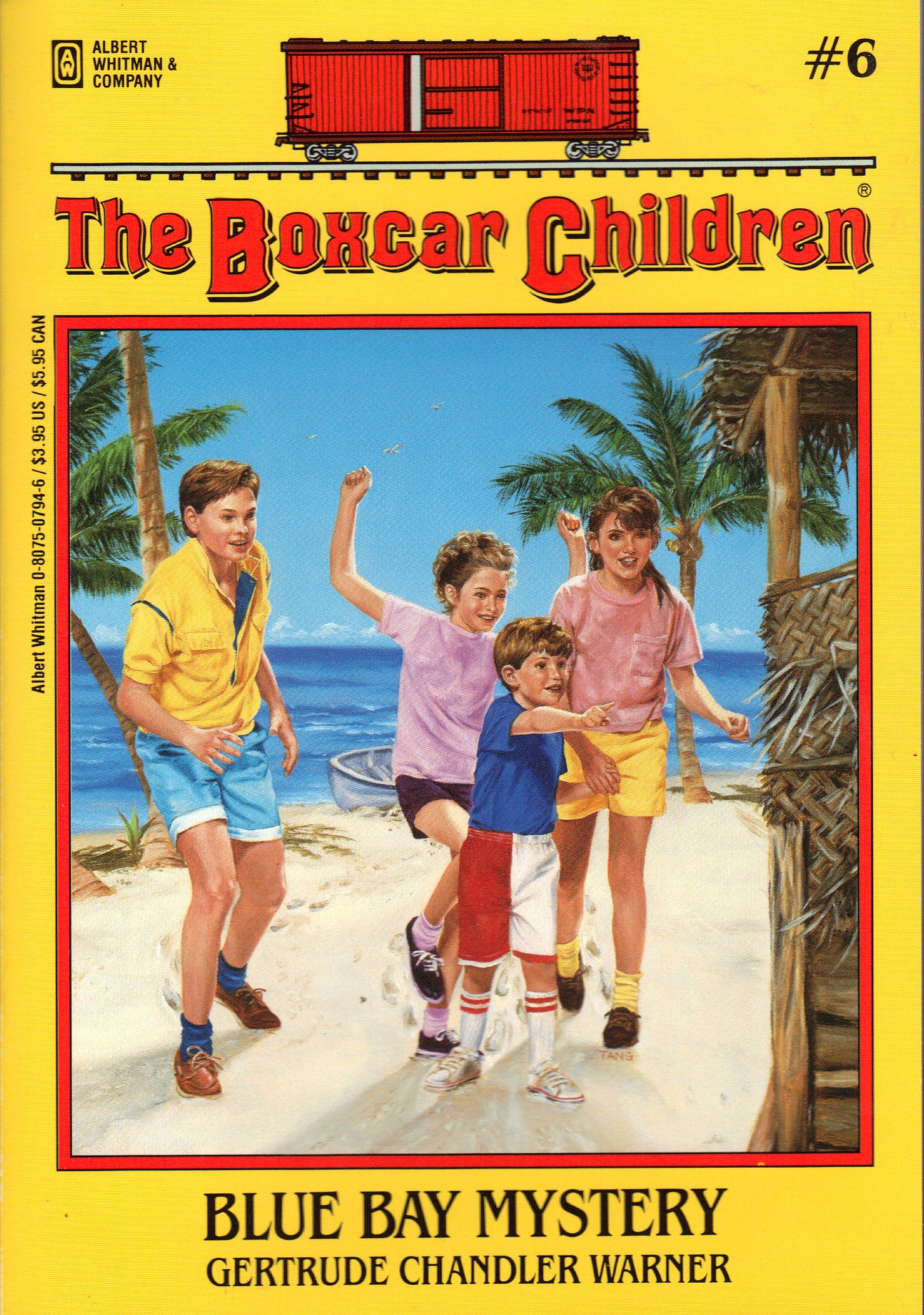Welcome to the Quarantine Creatives newsletter, a companion to my podcast of the same name, which explores creativity, art, and big ideas as we continue to live through this pandemic.
If you like what you’re reading, you can subscribe for free to have this newsletter delivered to your inbox on Wednesdays and Sundays:
We are officially nearing the end of harvest season in New England. Many of the farms in my area are closing for the winter, although fresh produce has remained abundant until the end.
I recently visited Hutchins Farm in Concord, MA and purchased a massive 23 pound box of organically grown cabbage for $15. This works out to about 65¢ per pound for cabbage that usually sells for $2.50 per pound. It was a phenomenal deal that I couldn’t pass up.
I realize that many people wouldn’t covet even a single head of cabbage, much less a box full of it. I may have seemed crazy, excitedly scooping up this brassica to promptly turn into sauerkraut. To be honest, if I had seen somebody else doing this a few years ago, I may have questioned their sanity.
It has been a slow process, but sauerkraut is now a staple of our diet. It is an incredibly simple product to make and only requires two ingredients: cabbage and salt. (I started adding caraway seeds to mine after tasting Hawthorne Valley’s version, but that’s a purely optional ingredient).
Sauerkraut is made using fermentation, the process of allowing lactic acid bacterias to convert the natural sugars in cabbage into acids and flavor compounds.
Cabbage on its own contains some Vitamin C, but when bacteria feed on the cabbage during the fermentation process, the by-products are much higher concentrations of vitamin C plus some B vitamins and probiotics that encourage good gut health.
Sauerkraut can be an acquired taste. I distinctly remember the first time I tried it when I was about 13 years old. It wasn’t pleasant.
We were visiting my Aunt Janice’s house in South Bend, Indiana for New Years and she was insistent that we eat black eyed peas, pork, and sauerkraut for good luck.
Aside from the pork, these were pretty foreign foods to me. I was not a kid that enjoyed any form of legume, nor was I especially excited about a pale vegetable with “sour” in the name. When I learned it was fermented cabbage, it became even less appealing.
Still, my aunt was superstitious and rather insistent that if my sister and I didn’t try her offering, we may not have a good year ahead of us. I did my best to sample a small bite of sauerkraut, vowing to never eat it again after I left Indiana.
As I grew older, I came to know sauerkraut as a condiment, mostly served on Reuben sandwiches. The only time of year it was in my shopping cart was in the early spring when I would buy corned beef brisket to cook around Saint Patrick’s Day. My wife and I used the leftover meat to make our own Reubens, adding Swiss cheese, Russian dressing, and sauerkraut.
The only container I would see at Whole Foods was rather large, more than enough for a few sandwiches. I never knew what to do with the rest of the jar, but we bought it because it was what they had on the shelf. I would try to eat it in salads or with a hot dog, but it didn’t taste great. I ended up throwing away a half jar every spring after corned beef season had passed.
It wasn’t until years later that I learned why I didn’t care for that particular sauerkraut. I was buying it from the condiment aisle, next to the olives and ketchup. This sauerkraut had been canned, just like pasta sauce or pickles, and the canning process involves heating up the jars to kill bacteria.
This sauerkraut was no longer a living food full of probiotics- those had all been killed in the canning process. It was shelf stable, but it was lacking in flavor and health benefits.
I would later discover that there were other sauerkrauts for sale a few aisles over in the refrigerated section. These were nearly double the cost, but they also were incredibly flavorful. I would happily eat these fermented shreds of cabbage on anything, but they also tasted amazing right out of the jar. I could almost feel the probiotics at work when eating refrigerated sauerkraut. My gut felt happy to eat them, but they were still a rare splurge.
My relationship to sauerkraut changed drastically about three years ago. My daughter and I had started reading The Boxcar Children series of books by Gertrude Chandler Warner every night before bed. The series details a family of children that were orphaned and live in an abandoned boxcar until they locate their estranged, wealthy grandfather.
One of the books in the series was called Blue Bay Mystery. By this point, the children have been taken into the care of their grandfather, and he begins sending them on exotic adventures to solve mysteries. This particular book is set on a ship destined for a remote Pacific island.
On the trip, one of the kids studies Captain Cook and how he was able to sail on long voyages and avoid a scurvy-ridden crew by carrying large quantities of sauerkraut on board his ships. This caught my attention and really stuck in my mind. My interest had been piqued, but The Boxcar Children only provided a little sampling of the full story.
As I read more about it elsewhere, I learned that scurvy was the result of Vitamin C deficiencies and it affected expeditions from the 16th to 19th centuries because sailors didn’t have access to things like fresh fruit while at sea.
Learning that sauerkraut could prevent scurvy took some trial and error. In the 1760s, the British crown tasked four sea captains with experimenting with various foods on their vessels to see the results on crew health.
Captain Cook was sent from England to the South Pacific with 7,860 pounds of sauerkraut on board his ship. Upon returning to England after three years with not a single death among his crew from scurvy, sauerkraut became a staple of sailors.
If sauerkraut could keep these mariners healthy, perhaps it should be a bigger part of my diet. Maybe I could even learn to make it?
I went to the library and checked out Fermented by Charlotte Pike. I immediately started experimenting with cabbages from my local farms. I made a few batches of sauerkraut, then a few batches of kimchi (a traditional Korean fermented food, made mostly of cabbage).
Over time, I refined my methods and began to eat more of these fermented foods. When I didn’t have a batch of my own handy, I would seek out locally made versions from companies like Real Pickles or Hawthorne Valley, which offered krauts flavored with garlic, turmeric, or jalapeños.
Sauerkraut became my gateway drug into the world of canning too. Once I realized how easy it was to preserve cabbage for eating later, I began to experiment with pickling, making jams, hot sauces, and tomato sauces. That’s become a bit of an obsession during the warmer summer months.
Still, my heart will always belong to sauerkraut. After adopting The Plant Paradox diet last year, which focuses on feeding healthy gut microbes, my entire family began consuming sauerkraut heavily.
I tend to eat it on homemade crackers with avocado and flax seeds for breakfast, but will also add it to stir fry dishes or even burgers. Our family eats about a jar per week of sauerkraut, which means that huge box of cabbage I purchased recently could last us several months.
We may not be going on journeys across the sea anymore, but sauerkraut is one of the staple foods on our RV trips. Part of the joy of traveling is discovering regional sauerkrauts and other fermented foods, which we were delighted to find at the Wardensville Garden Market on our amazing trip to West Virginia this summer (they were selling Farmstead Ferments) and at Amish markets in Lancaster, PA. It is a staple food for us, as vital to the kitchen as onions, garlic, or salt.
Sauerkraut was something that I feared and reviled when I first tried it, and now it’s something that I make at home and eat daily. If you’ve been freaked out by it, or perhaps tasted it and it wasn’t to your liking, it could very well be that you were sampling “dead” sauerkraut instead of the living kind. I encourage finding a local sauerkraut producer and giving their wares another chance. You may find that you do like it, and you’ll be helping stave off sickness by getting a food-based dose of healthy vitamins and probiotics.
If you’re feeling ready to try making your own, I recently demonstrated how I make my sauerkraut for my wife’s YouTube channel. Check out the video here:
What are your thoughts on sauerkraut? Is it a staple food or something that you avoid at all costs? Please share your thoughts in the comments- I love hearing from you!
Related Reading
Did I Have West Virginia Wrong?
If you’d like to catch up on past episodes of the Quarantine Creatives podcast, they can be found on Apple Podcasts, Spotify, or wherever you listen.
If you’ve missed past issues of this newsletter, they are available to read here.
Stay Safe!
Heath














Learnt a lot today from this post. Thanks Heather.